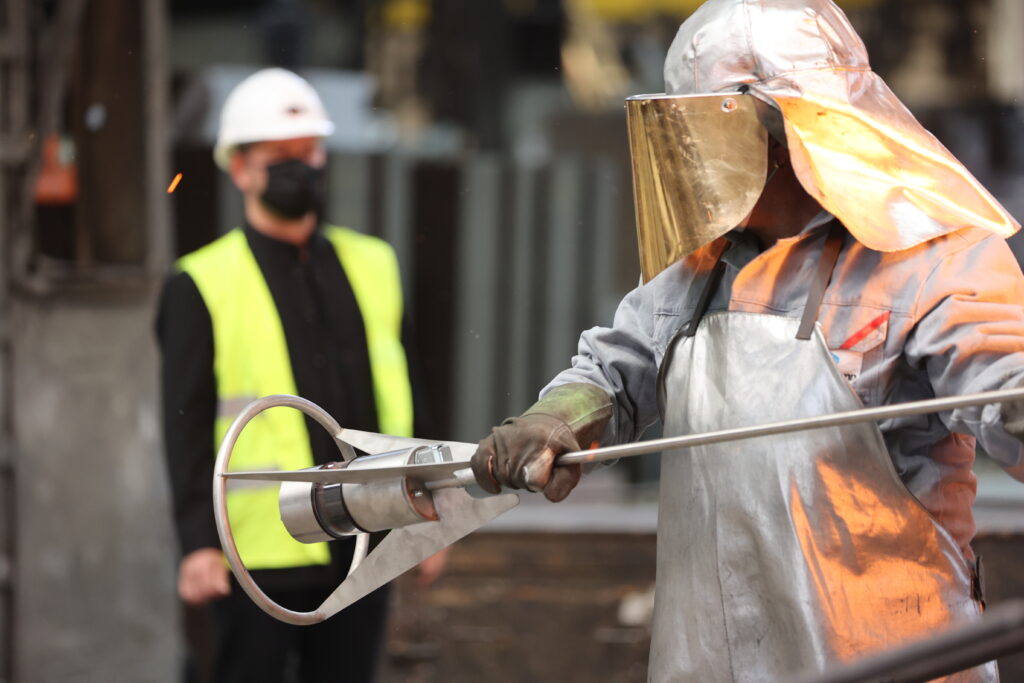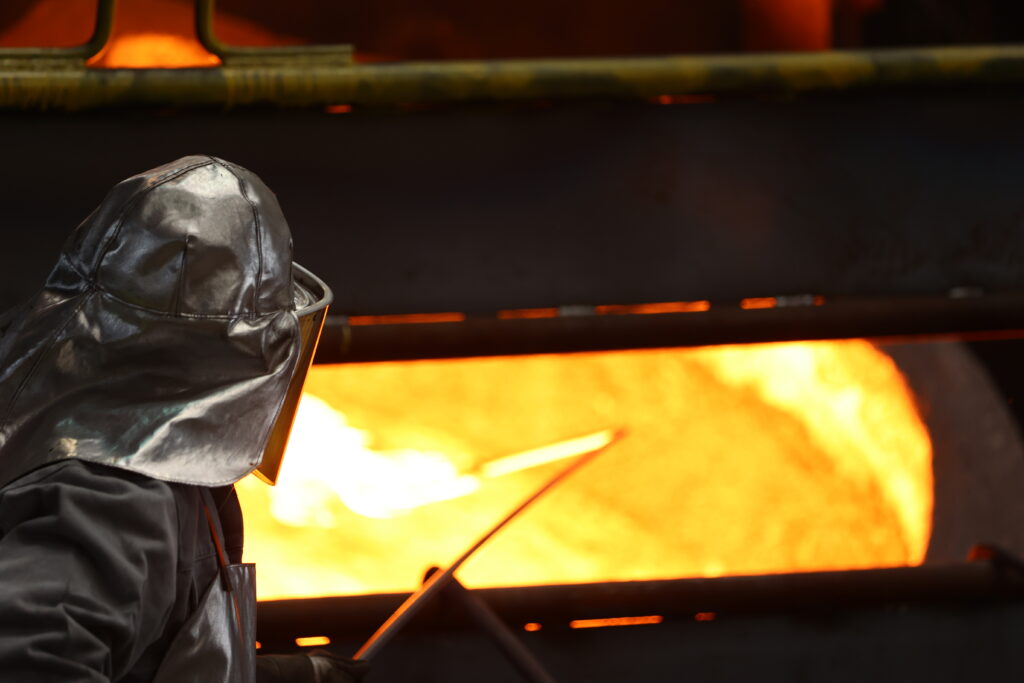A workplace of extremes – this certainly is the case when working in a foundry where metals are processed at temperatures of more than 1,000 degrees. The very highest level of safety during processing is of course crucial here, but so is the quality of the product at the end of the process. Up to now, this process depended primarily on the respective expertise of the smelter.

This process is now digitally documented, analyzed and optimized by means of artificial intelligence with the „FoundryCloud“ from the start-up Zorc Technology. The „FoundryCloud“ is integrated directly into the ABP gateway and interacts seamlessly with the myABP platform. The Zorc solution, which was developed exclusively for foundries, represents the platform for predictive process control. Further digital business models in this environment are within close reach. The first platform of this kind has now been installed in Krefeld.
The Siempelkamp Foundry has been facing major challenges that impact the entire metal processing industry: Reduction of energy costs and CO2 emissions, the topic of sustainability in its three dimensions in general, and thus competitiveness in the long term. Siempelkamp decided to take a great leap that was unique in the industry and demanded a trailblazing sense of pioneering spirit on the part of all those involved. The modernization of its induction furnaces heralds the beginning of a digitization offensive the likes of which have never been seen before on this scale in the foundry sector. The digital control of the plant now enables higher-precision production with even lower waste.
ABP makes first complete digitalization of melting operation possible
Benefits range from lower power consumption to reduced costs and greater environmental protection. In addition, the foundry can now complete customer orders with much greater speed, efficiency, and manufacturing accuracy. Employees also benefit from the upgrade to their job description, they enjoy greater job security, and even safer workplaces.
The transition to digital control is being carried out gradually in several installation and test phases, one of which involves ABP‘s PRODAPT® melting processor, and was completed by the end of 2021. The furnaces started their fully digitalized operation in January 2022.
Interfaces between systems and operating system
Why Siempelkamp has brought a classic system manufacturer on board with ABP Induction becomes quite clear when looking at the developments at the Dortmund-based company over the last few years: ABP has built up its very own digitalization division and today offers numerous digital services related to foundry operations – from virtual classrooms and virtual reality training to augmented reality support for maintenance and repair. Moreover, there are also components such as the controller by ABP Intelligence on the ABP gateway with the necessary interfaces to the operating system of the foundry. The myABP portal acts as the heart of the system and provides an overview of all relevant systems and processes – all elements from furnaces to scales to temperature measurements using lances are integrated, regardless of their manufacturer. With its data quality and transparency, it provides the foundation for a continuous optimization process.

With this, ABP has created the platform for the „FoundryCloud“ software solution, which Zorc Technology has developed specifically for foundries. This new software for monitoring metallurgical control and documentation stores the foundry‘s operating parameters and transmits experience- and AI-based suggestions to optimize production directly to the employees.
Previously, each casting was primarily dependent on the specific knowledge of the melter, but now the melter is assisted by the new software. It monitors the processes in the induction furnace and documents the parameters. It uses the data to develop suggestions for optimizing the process and sends the suggestions to the relevant employee, who can then use them to make adjustments. In the process, the software uses existing data and, thanks to the integration of artificial intelligence, is constantly learning. In this way, the data pool becomes steadily larger and the quality of the casting process steadily better. As a result, costly corrections and even rejects can be prevented to the greatest possible extent.
While 98 percent of the casting process is already firmly controlled, the digitalized system gives the Siempelkamp Foundry an additional increase in manufacturing excellence. The operating parameters that need to be monitored during a casting are highly complex and multifaceted: Loading, start and target temperature, process times, and last but not least the optimal use of energy – each factor plays a decisive role in the ultimate success of the process. As the digitized furnaces now collect, store and evaluate key data, artificial intelligence can be used to analyze and further process it.
Comparing data, recognizing patterns
Thanks to the resulting algorithms, data can be compared and recurring patterns detected. The result: The software is able to solve previously unknown problems with an ever-greater degree of precision and supports the employee at the furnace in controlling the processes proactively. The user can therefore dedicate his full attention to interpreting the data and adapting the melting process to it in the best possible way. This is a particularly valuable aid when new components and factors have to be included.
However, the digitization of induction furnaces also shows how important the interaction between people and technology remains in the age of Industry 4.0: Employees and their expertise in terms of interpretation cannot be replaced in the process. The digital solution merely supports them in casting even faster, more efficiently, more correctly and more routinely.
Learning platform for training
The Krefeld-based company has opted for comprehensive training courses to familiarize its employees with the new technology. The aim is not to train the foundry mechanics as IT specialists, but to expand their metalworking skills to include the use of digital applications. The three cooperation partners are therefore also increasing the value and scope of the foundry profession profiles and making their companies more appealing to applicants.
The topic of work safety will also be part of the virtual classroom training in the solution, which in addition to teaching the technological innovations has already won numerous awards. In addition to production support, the pool of data makes it possible to simulate crisis situations in a preventive manner, which employees can act out with the help of state-of-the-art VR technology. This therefore makes the foundry mechanic‘s workplace a little safer when dealing with the red-hot molten metal.
Ecological footprint
At the same time, the site‘s ecological footprint is significantly improved as a result of the lower energy and material consumption. After all, the central unit is responsible for two-thirds of the company‘s electricity consumption. More accurate processes and even less waste can help reduce CO2 emissions in this area. According to initial estimates, this could result in total CO2 savings of up to 1,000 metric tons per year.
A look at the entire system also reveals a positive environmental aspect: The maintenance program that has been incorporated into the software solution, with its end-to-end condition control and monitoring, means that preventive maintenance can be carried out in a highly targeted manner. It thus makes a significant contribution to extending lifecycles. Transitioning to more energy-efficient processes also makes production more economical for the foundry. This represents a major competitive asset for a business in an energy-intensive sector. After all, energy costs at German foundries currently account for 25 percent of their gross value added. In view of the fact that electricity prices have nearly tripled in the past 15 years, this is an item in the budget that should definitely not be underestimated. The additional reduction in waste scrap also leads to savings in materials.
The new platform technology will therefore also have a noticeable effect on the company‘s bottom line. And this with a comparatively low investment volume – in comparison to the entire furnace system. And this is yet a further point that will enable the company to set itself apart from its competitors.
